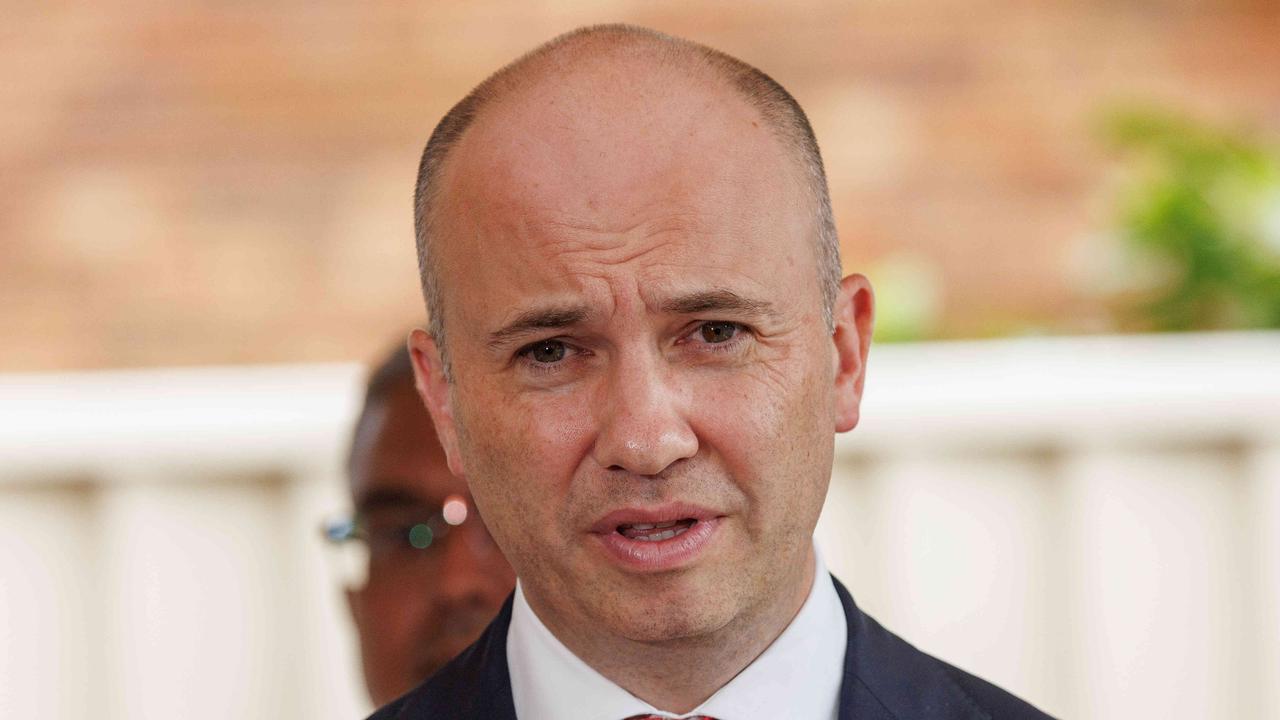The weather is pretty unstable and it’s here to stay for a while
IT’S hot one day, cold the next, and sometimes both in one day. You should probably keep both your winter coat and your beach gear on standby, just in case.

AUSTRALIA, we need to talk about this weather.
We’re experiencing days of bright sunshine punctuated by sudden, angry downfalls. We’re seeing blisteringly hot mornings and cold, rainy nights. It’s summer one day and winter the next — and sometimes both in one day.
And we’ve all been left to wonder: what happened to our early summer?
That’s on hold, for now, it seems. Varied weather conditions are predicted for much of the country for the rest of this week, bringing up-and-down temperatures and off-and-on rainfall.
In Sydney, where yesterday’s warm and sunny conditions were interrupted by a moody afternoon rainstorm, the temperatures have slumped to a winter-like 21C today.
The opposite is happening in Melbourne, which can expect to see today’s maximum of 21C soar to 30C by Thursday.
Perth can expect a midweek cool change, while Adelaide looks set to heat right up.
Bureau of Meteorology senior forecaster Sarwan Dey said the conditions were pretty typical of this time of year.
He said the change was due to a high pressure system in the Great Australian Bight that was moving east, and a trough of low pressure that was also moving east through central NSW and southeast Queensland.

“It will be a bit unstable in that area and while we’re not expecting any major developments of thunderstorms, there is a possibility of some storm activity there,” he said.
“Much of Victoria and NSW is going to be fairly stable without any major weather systems until about late Thursday and into Friday. There is a trough of low pressure that’s going to move through the southeast of the continent and that’s going to make things unstable.
“And there’s a similar trough of low pressure in Western Australia and there is some activity associated with that, but again it’s isolated.
“Over the south-eastern part of the country, such as Melbourne and into NSW, we will see northerly winds, so the temperatures will gradually rise over three days, and on Thursday a cold front will approach Tasmania and that cold front, with the trough of low pressure, will move through and bring about the cooler change that’s happening on Saturday.”
Mr Dey said there was the possibility of storms in Victoria and into NSW but not much rain was expected. And severe weather warnings for southeast Queensland and NSW looked to be isolated.

So here’s what you can expect from each of the capital cities for the rest of the week — and you should probably keep both your winter coat and your beach gear on standby, just in case.
SYDNEY
Sydney can expect a shower or two today with highs of 21C, before clearing to highs of 23C and 25C on Wednesday and Thursday. Friday will bring a sunny 28C, before rain and cooler temperatures of 23C and 24C move in on Saturday and Sunday.
MELBOURNE
Melbourne will be mostly sunny with highs of 21C today before reaching 27C on Wednesday, 30C on Thursday, a possible shower and 26C on Friday, and down to 20C and 22C on Saturday and Sunday.
BRISBANE
Conditions will be a bit more steady in Brisbane, with a possible storm and highs of 31C today and possible showers and highs of 26C for the rest of the week. The weekend will bring sunny conditions and highs of 28C.
ADELAIDE
It will be mostly sunny in Adelaide this week, with highs of 23C today before climbing to 29C on Wednesday, 34C on Thursday, 25C on Friday.
CANBERRA
Canberra will see highs of 21C today, 24C on Wednesday and 28C and 30C to end the working week. The weekend will bring showers with highs of 27C and 26C.
HOBART
Hobart will be up to 18C today and temperatures will remain around 19C to 20C, except for Thursday, which will see a spike to a mostly sunny 28C.
PERTH
It will be 28C and partly cloudy in Perth today. Tomorrow will bring showers and a high of 21C, before clearing to 20C on Thursday, 23C on Friday, and a sunny weekend with maximum temperatures of 28C.
DARWIN
Darwin, nearing the end of the dry season, can expect mostly sunny days this week with temperatures hovering around the 33C to 34C mark through to next week.

GET READY FOR A HOT SUMMER
The bureau expects about half of the country to seriously heat up over the next three months, and possibly exceed temperatures we’re used to seeing from October to December.
According to bureau data, the lower half of the country — including southern Western Australia, Adelaide, Tasmania, Victoria, NSW and southern Queensland — has a 60 per cent chance of exceeding the median maximum temperatures in October to December.
But the good news for the northern parts of the country is that this year’s tropical cyclone outlook expects fewer cyclones thanks to a strong El Nino weather pattern.
“The long-term average number of tropical cyclones in Australia during the November to April cyclone season is eleven,” the bureau’s climate prediction manager Dr Andrew Watkins said.
“This year we expect fewer tropical cyclones than normal because of the effects of the strong El Nino in the tropical Pacific Ocean.
“The El Nino is expected to continue into 2016, and typically delays the date of the first cyclone to cross the Australian coast.”
But despite the good news, northern Australians are still being urged to start their cyclone preparation.
“While El Nino is typically associated with fewer cyclones and a later start to the season, there has never been a cyclone season without at least one tropical cyclone crossing the Australia coast.”




